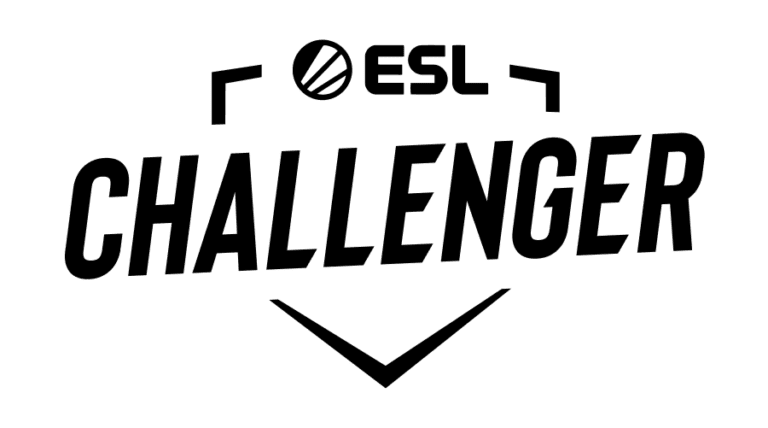How can a game played 1 vs. 4 provide a long-time and engaging competitive experience enjoyed by players and viewers alike? That was one of the questions four guys from the ESL were looking to answer at the 2K offices in Munich after having made an early morning 500 kilometer road trip from Cologne to test the new Turtle Rock Studios title Evolve. Since the meeting took place a good while before Pax East, where the game was first showcased last week, we knew very little about what we were in for, with only very few details having been shown to the public as of then. However, having all played Left for Dead and with a good 50 years of eSports and FPS experience between us, everyone was pumped to knock heads and give the game a proper competitive examination.
Arriving at the 2K, offices we were escorted to what would be our home for the next few hours, a bunker-like room illuminated by the glow of five high performance gaming rigs cleverly positioned so that the monster player’s screen was hidden from the remaining players. With a kitchen stocked with Red Bull and Pizza next door, we settled into our seats and proceeded to have the gameplay, roles and general strategy explained to us. To help understand the experience, be sure to check out the excellent gameplay video below, which allows you to seamlessly switch between the perspectives of all five players:
Game overview
Evolve is a 4 vs. 1 experience with one player taking the role of the monster while the other four players are hunters, each with a unique skillset. The hunters’ objective is to track down and kill the monster, while the monster can win by either eliminating the hunters or fulfilling a key objective (such as destroying a generator) before a timer runs out. In order to do this, it first has to feed on wildlife (killing and then consuming it) and evolve from a stage one monster to a stage three monster.
As it evolves, the monster gains health, shield, armor and damage, ultimately giving it the ability to full-out engage and take out the unit of hunters. As such, it’s the mission of the hunters to quickly track, locate, confine and kill the monster before it has the chance to feed and grow in power. Yet even at stage one, the extreme discrepancy in health and damage output between the monster and the hunters means that the hunter team has to work as a close-knit unit if they want to have a chance to win the round.
The classes
Trapper: Although all classes are capable of tracking the monster’s footprints, the trapper class is the one most specialized in cornering the monster and forcing it to engage. By strategically placing soundspikes throughout the map he can track the monster’s movements, while his harpoon gun restricts the monster’s mobility and forces it to shift focus. His most powerful ability is a containment dome which captures the monster in a single area, forcing it to engage the hunters.
Assault: The damage dealer of the group. With the biggest health pool, a personal shield that grants short-term invincibility and a short range lightning gun that deals the most damage of any weapon in the game, the assault class is the front-line unit that gets up in the monster’s face. The main job of the assault player is to draw the monster’s attention and to chip down its health bar with guns and mines.
Medic: A unit that feels much like a classical scout, the anti-material sniper rifle-toting medic plays a key support and damage role. During the chase and in combat, the medic’s tranquilizer gun is an important tool as it slows the monster’s movement and highlights its location to all players for the duration of the slow. With the sniper rifle, the medic is able to cause weak spots on the monster, which other players can hit for additional damage. True to the class’s name, the medic also has a healing gun which enables healing of injured comrades, even at range. A good medic will therefore stay at a safe distance slowing and weakening the monster while making sure that the assault stays alive by keeping a heal ray focused on him.

Support: Similar to the medic, the support is crucial for both helping teammates stay alive and dishing out damage to the monster with abilities such as an orbital barrage, which rains down high-damage bombs across a wide area. The support’s signature weapon is the shield gun, which grants temporary invulnerability to a team member. Also equipped with a personal cloaking device to stay out of sight of the monster, the support plays a crucial role in keeping the assault and other team members alive.
Monster: Although the game will have multiple varied monster classes available on release in the early alpha version that we played, there was only one playable monster class: a massive fire-breathing behemoth called Goliath. The monster had various abilities to choose from, with two being selectable from the start and more being unlocked as you leveled up. These included a ranged skill shot rock throw, a quick charge forward, a leap attack and fire breathing. You also have various inherent skills such as being able to sonar scan your surroundings for killable wildlife. Wildlife is extremely important as consuming it boosts your health and armor as well as allowing you to evolve up after a certain quantity has been eaten.
The gameplay
Matches start off with the monster having a several second head start before hunters arrive in their dropship and begin the chase. Although the monster can theoretically engage at stage one and kill one or more of the hunters, most of our monster players opted for the safe strategy of fleeing into the vast and beautiful surroundings to look for prey. If they managed to reach the second evolution stage before being tracked down by the jetpack-toting hunters, it greatly increased their survival chances in the early game and thus likelihood of winning the round.
However, sometimes when a monster decided to feed too close to the spawning ground or the hunters quickly picked up the trail, the battle would start straight away, and some of the best fights were those where a still-weak monster was permanently tranquilized and harpooned as it desperately tried to escape through the bustling jungle.
One of the great things about the jungle and its wildlife is the interactivity – with everything from panicked birds giving clues to the whereabouts of the monster to larger, more dangerous creatures such as massive crocodiles posing a threat to monster and hunters alike. A smart monster could therefore dissuade pursuers by fleeing through the habitat of fellow predators.
If the monster managed to elude the hunters long enough to feast its way to stage three, the game usually turned around, with the previously hunted now assuming its rightful place as hunter and the monster targeting the now-attackable objective. On the map we were playing, this was a power generator powering the shields for a cage containing several civilians. While it was already instrumental in earlier fights that the hunter team coordinated to heal/shield the assault while keeping the backlines safe, it was even more important in these late-game matches, where a good monster would always try to target the elusive support who could otherwise indefinitely save their companions from dying. As such, splitting up, covering each other’s backs and maintaining the high ground while the assault dished out damage was crucial for being able to compete with the fire-breathing monstrosity that was the Goliath player.

Our thoughts
As our first encounter with Evolve turned into a 12+ hour marathon session, during which everyone played countless times as every single hunter class as well as the monster – there was a broad consensus that Turtle Rock Studios had created something that was a genuine blast to play. The matches were high intensity, the gameplay unique and interesting, team play was not only important but essential and every class felt like it was contributing something substantial. On the flip side, the experience as a monster was extremely fun as even at the very start you have the power to quickly take down small groups of hunters who get overconfident in their chase. Especially as more monster classes with unique abilities and maps are introduced, the strategic options will get highly interesting. As Turtle Rock Studios has already implemented pre-game loadout selection options, which could easily be expanded upon, there is definitely room for pre-game strategy and drafting in potential competitive modes.
For the moment, leave us your thoughts in the comments below as well as what you think of the interactive trailer. In our next piece on Evolve, we will take a closer look at potential eSports formats and how the game could evolve into a truly massive title.












